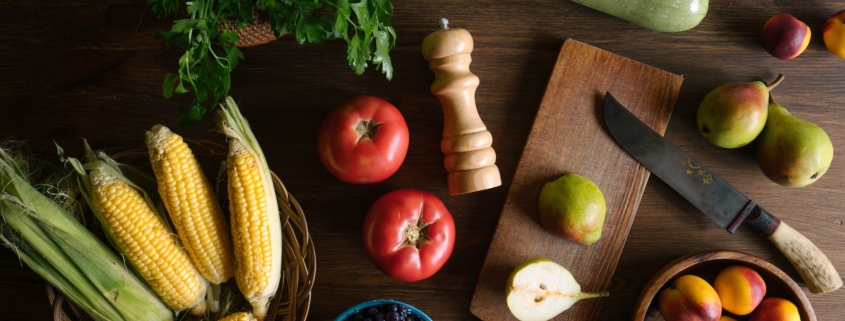Food Safety in the Warmer Months
 The sun is shining, the trees have turned green, and the temperature has risen above 60 degrees, which can only mean one thing, it is time to eat outside! There is something about eating in the great outdoors that just makes the food taste better. However, transporting food and eating in a timely matter can present a challenge, that is why it is important to always practice food safety. June 7th, National Food Safety Day, is dedicated to educating the public to keep them safe from foodborne illness.
The sun is shining, the trees have turned green, and the temperature has risen above 60 degrees, which can only mean one thing, it is time to eat outside! There is something about eating in the great outdoors that just makes the food taste better. However, transporting food and eating in a timely matter can present a challenge, that is why it is important to always practice food safety. June 7th, National Food Safety Day, is dedicated to educating the public to keep them safe from foodborne illness.
Anyone can be affected by a foodborne illness no matter how safe they are, however, there are certain rules that people can follow to mitigate their risk of becoming sick. From making sure that everything is cleaned thoroughly to cooking food to the proper temperature, the kitchen is where you will spend most of your time ensuring your food is safe to eat before heading outdoors.
Once the food is cooked, it is all ready to be transported to the festivities. However, there are many opportunities along the way for the food to become spoiled. Keeping your food safe during transportation can be tricky, that is why packing it correctly is key. Follow these rules to make sure your outdoor bash is unforgettable for all the right reasons.
Keeping Safe in the Kitchen
Food safety starts in the grocery store, making sure that all the food items are properly refrigerated and cans and packages are not damaged. Then, once you get home, it’s all about how you handle the food in the kitchen. Here are some simple guidlines to follow when you’re home:
Wash: Make sure to thoroughly wash all fruits and vegetables in soap and water before consuming. You can even invest in a small brush that you can use to scrub produce clean. Also, be sure to wash your hands before handling food!
Storing: Food should be stored properly as soon as you get home from the grocery store. All frozen and refrigerated items should be put away as soon as you get home. Store foods that will be eaten raw at the top of the fridge and food that will need to be cooked at the bottom. This is to prevent juices from the uncooked meats leaking onto food that is to be consumed without heating.
Cooking: Buy a meat thermometer to ensure that you are cooking all the food to the proper temperature. Cooking the food to the correct temperature is vital to killing off harmful bacteria. Each food item will have a different temperature required to be heated to kill bacteria. Beef, pork, veal, fish, and lamb should be cooked to 145 degrees F. Ground beef, veal, and lamb should be cooked to 160 degrees F. Eggs should be cooked to 160 degrees F. Finally, poultry should be cooked to 165 degrees F.
Separate: Always make sure to separate food items to prevent cross-contamination. Raw meat should never be mixed with seafood, poultry, eggs, or other items since they all have different safe temperatures. Invest in separate cutting boards to help reduce cross-contamination.
Danger Zone: Food should not be left out for over 2 hours. If the temperature reaches above 90 degrees F, reduced the time to 1 hour. When food is left out for longer it risks falling into the “danger zone” which is the temperature between 40 degrees F and 140 degrees F. This is the temperature where bacteria flourishes.
Food Safety On-The-Go
Now that the food is all prepared, it is time to pack it to go! Transporting food can be tricky, especially in the summer heat. Follow these simple tips to keep your food safe:
- Use airtight containers to store your food in to keep it fresh
- If you are bringing leftovers, make sure they are no more than 3-4 days old.
- When packing a cooler, follow the same safety guidelines as storing food in the refrigerator.
- Limit the opening and closing of the cooler to keep the food cold.
- Bring a thermometer to the cookout to make sure everything is safe to eat.
- Continuously wash your hands while handling food.
Now that your risk of foodborne illness is reduced, enjoy the day!
Your Turn to Action: What food safety practices have you adapted? Let me know in the comments below.


Leave a Reply
Want to join the discussion?Feel free to contribute!